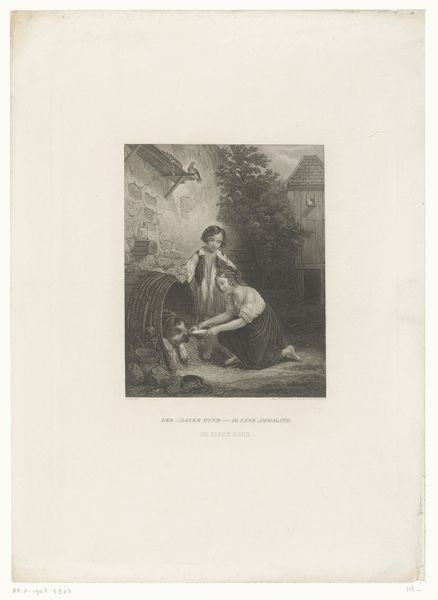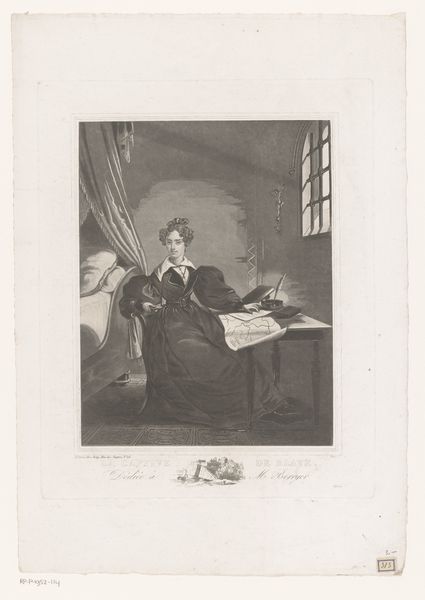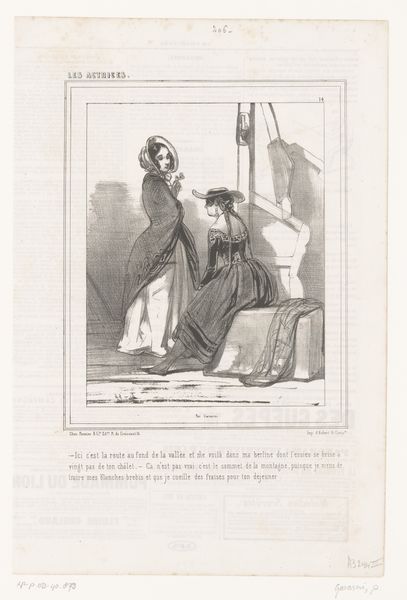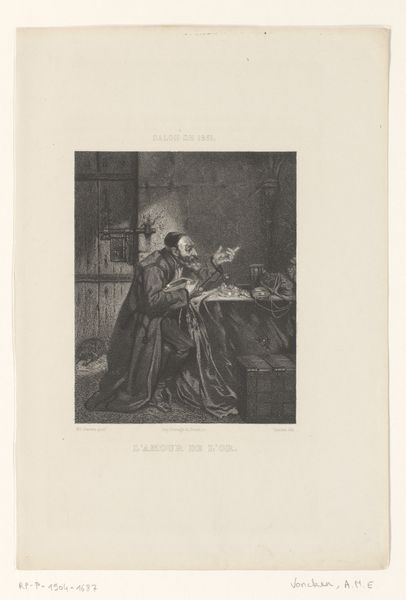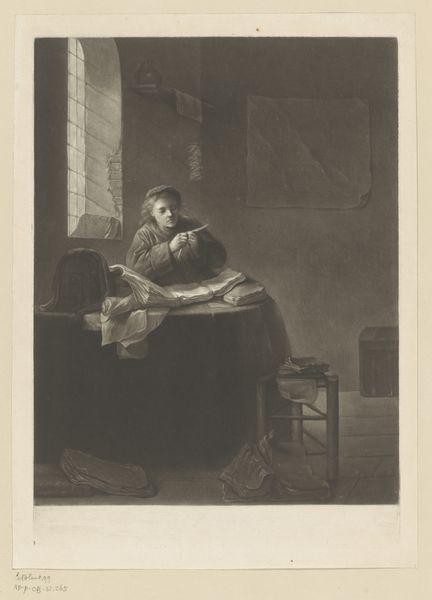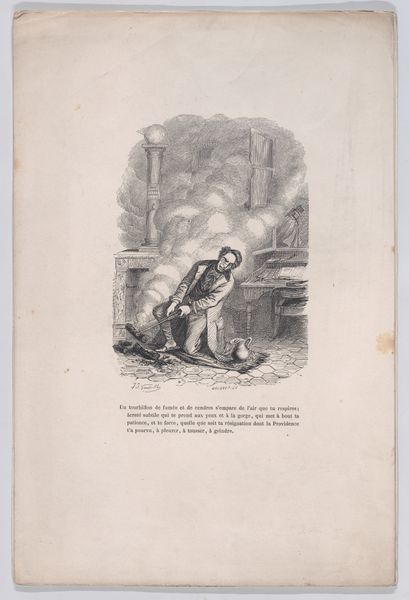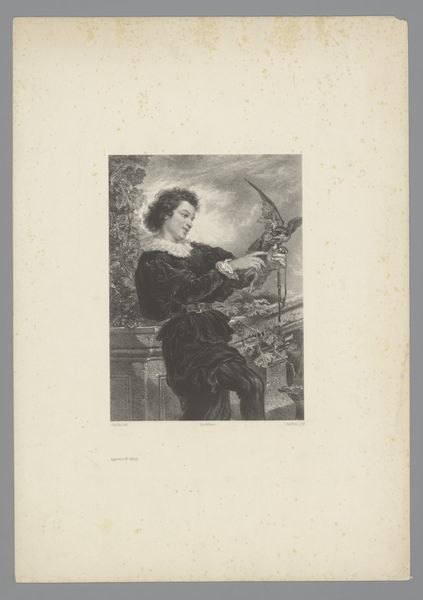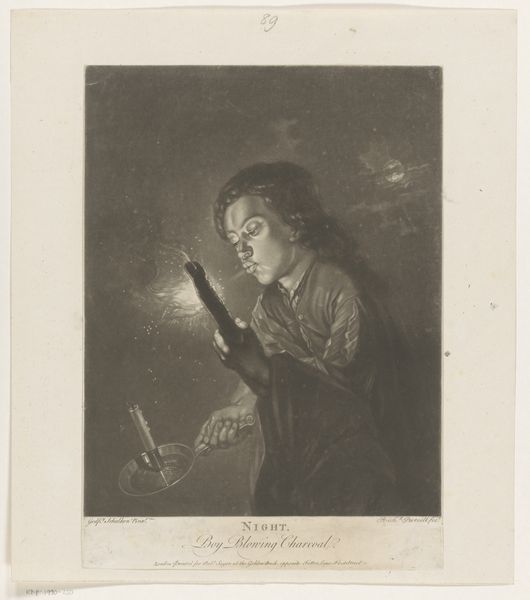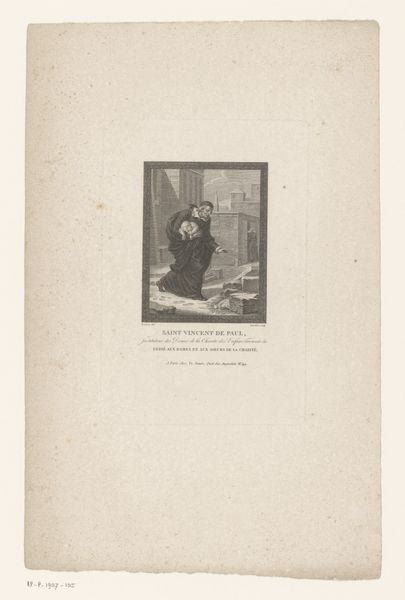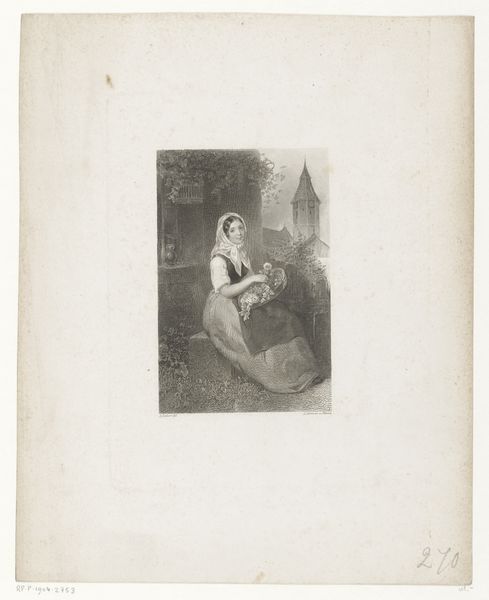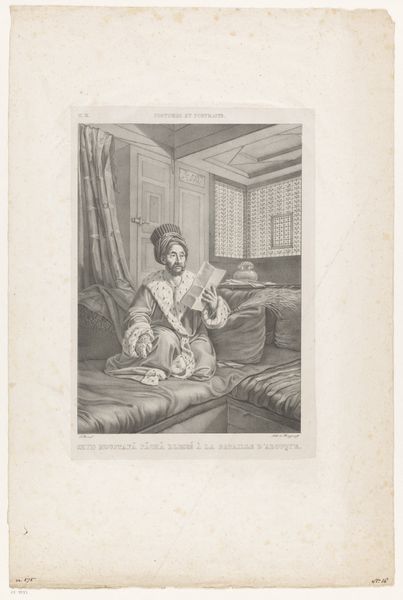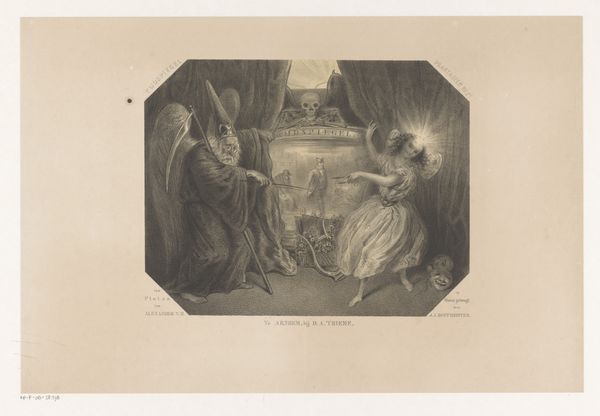
print, engraving
#
portrait
#
pencil drawn
#
light pencil work
# print
#
old engraving style
#
pencil work
#
history-painting
#
engraving
Dimensions: height 344 mm, width 275 mm
Copyright: Rijks Museum: Open Domain
Curator: Welcome. Here we have an engraving from between 1812 and 1899, titled “De heilige Aloysius Gonzaga, knielend aan een altaar.” Editor: The lighting immediately grabs me. The heavy clouds above contrast dramatically with the focused beam shining down on the kneeling figure. Curator: Precisely. The piece depicts Saint Aloysius Gonzaga kneeling in prayer before an altar. Gonzaga, known for his piety and service to the sick, is rendered here in a moment of deep devotion. We can examine the history of his canonization, the circumstances of his life, the political aspects of Catholic sainthood. Editor: Interesting. My eye is drawn to the crucifix held in his hands. The artist, Wibaille, used such fine lines to detail the human figure, creating visual weight by increasing density around the dark robes, and in the swirling clouds. Curator: The clouds definitely merit some further exploration, wouldn't you agree? Notice how the divine light washes over Aloysius. It serves not just as a source of illumination but also symbolizes divine grace and recognition. It speaks to issues of power and authority that relate back to its subject's place in a stratified church hierarchy. Editor: The symbolism is heightened, certainly, by the contrasting darkness surrounding it. The bouquet lying on the floor might signal some sacrifice and a reminder of earthly things relinquished for religious devotion. Curator: That position, prostrate but dignified, captures the performative aspects of faith in the early modern era. Aloysius's role as an intercessor is essential to understanding the function of artworks such as these, created during times of shifting power dynamics within religious and aristocratic European society. Editor: Yes, by attending to the light and shadow, by understanding their relationship within the image, we also understand a deeper narrative. Curator: Indeed. The narrative, I think, resonates beyond its initial religious context, allowing us to think about representation, devotion, sacrifice, and how they operate even today. Editor: The interplay of these technical and thematic aspects, when understood together, elevates our understanding of art's function throughout history.
Comments
No comments
Be the first to comment and join the conversation on the ultimate creative platform.
